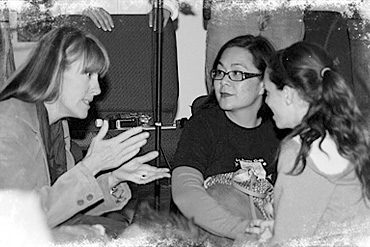
2016 Archives
waking
Continuing to look at the method and approach to spirituality at theeffect, one of the hallmarks is the contemplative life and contemplative prayer. How to understand contemplation? Simply stated, it’s the letting go of habitual thoughts, feelings, and behavioral patterns, letting of what we think it means to be ourselves, our ego-self in favor of what really is here and now present in the form of God’s spirit. What does that feel like?
Read More
about participation
We continue the thread started in the last message, which summed up the approach of theeffect ministry as working to help each individual find acceptance, get involved, build trust, and live theeffect of God’s love. Now what was that second point, again? Getting involved is really all about participation. Participation in what? Faith? Well, a much better way to put it is that participation is faith and faith is participation.
Read More
who, what, why
As we near our ninth anniversary as a ministry, seemed time to step back redefine what theeffect was founded to be and what we work to do each day in the minds and hearts of those with whom we connect. Our approach can be summed up as a working to help each individual find acceptance, get involved, build trust, and live theeffect of God’s love.
read more
abwoon
Renowned international Aramaic scholar Dr. Rocco Errico, founder of the Aramaic Institute and long time student of Dr. George Lamsa, joins us to present Jesus’ model prayer, what we call the Lord’s Prayer, from a deeply Aramaic, Semitic point of view.
least of these
On Palm Sunday, we look again at our expectations and biases and try to pry loose all we think we know of Jesus: from what he looks like to what we believe of his mission and teachings to test whether we, like those greeting Jesus along the streets of Jerusalem would miss the moment of our visitation.
Read More
heartbeat of life
Our recovery pastor, Frank, takes the mic to work through the essentials of a spiritual walk, pulling from Matthew, John, II Corinthians, and even his own dreams to show us the shape of the journey from descent to ascent—the heartbeat of life.
choosing sides
As we look at religion and church practice, it all looks so polarized, so black and white, right and wrong—so binary, as if all our spirituality comes down to a choosing of sides. Which side is right and has the power to save and which does not. A young poet writes about why he hates religion and lists all the evils for which religion is responsible. Religion is bad; Jesus didn’t do religion; Jesus ended religion. Really? Jesus didn’t do religion?
Read More
accepting the ride
James Series 8: In this final session on the book of James, James makes the transition from more commentary on harmful practices and attitudes among those in his community—speaking ill of each other, arrogantly believing one’s own capacity to control circumstances independently of God, swearing—back to prayer and submission to God. And in this transition, he comes full circle from the acceptance of life’s difficulties and challenges with which he began, to the acceptance of our most basic relationship with life.
Read More
falling rules
James Series 7: James continues to hammer on the theme of making our actions match the ends we seek in Kingdom. He points to counter-kingdom practices and action he witnesses in his community—the fights, quarrels, covetousness—and harshly admonishes his people. But again, we need to resist the temptation to just see more rules to follow here. James tells us to draw near to God, humble ourselves, submit, and allow ourselves to let go and descend into a kind of mourning, a sense of loss of all the things we held dear in order to find what is really dear in life.
Read More
starting with heaven
James Series 6: Continuing to develop his theme of the law of liberty, James is determined that we understand how fully becoming the law as Jesus framed it—the fulfilling of law as opposed to mere rule following—was the embodiment of faith. His famous passage about the power of the tongue comparing it to rudders on ships and bits on horses is a colorful way of restating Jesus’ teaching that it’s not what goes into man that defiles him, but what comes out. It’s tempting to see these admonitions as more rules to follow, but James is trying to convey that we must use the same means as the ends we seek.



